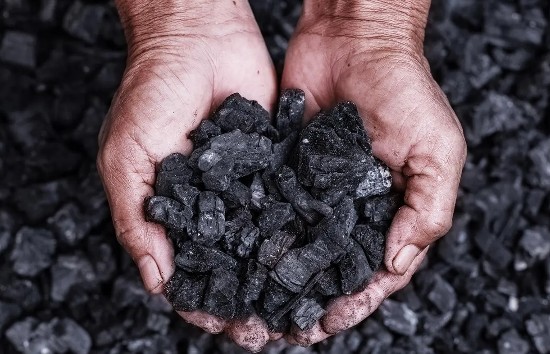
Ever heard of The Global Alliance for Sustainable Coal? If not, then read on to learn more about how an entire industry, the premier member of the fossil fuel triumvirate, is using bafflegab and greenwashing to sell its products. Coal in the run-up to COP28 has been going through a rebranding exercise. The terminology sounds right, but the results for the planet are deadly when looking at the contribution coal is making to rising atmospheric temperatures.
Today, according to the Global Coal Mine Tracker there are:
- Approximately 4,300 working coal mines and projects around the world account for 95% of the coal burned today.
- 9,000 coal-fired thermal power plants contributed 40% of the carbon emissions produced by utilities in 2022 producing 15.5 Gigatons of carbon dioxide (CO2) released into the atmosphere that year.
- Coal provides 90% of the energy used to make cement, 70% of the energy for steel, and 61% for aluminum. How much CO2 is produced? Using cement as an example, if it was a country it would be the third-biggest source of CO2 emissions, with only China and the United States generating more.
Burning coal produces aerosols and particulate matter which form the haze and smog enveloping cities like New Delhi, Beijing, Shanghai, and others. A recent University College London study attributes 1 in 5 global deaths each year or approximately 8 million from breathing air containing the aerosols and particulate matter produced by burning fuels like coal (other fossil fuels like oil, gasoline and diesel are contributors as well). Burning coal’s particulate matter emissions aggravate respiratory conditions like asthma and contribute to lung cancer, coronary heart disease, and strokes.
Rebranding Coal Messaging is an Exercise in Greenwashing
The Alliance for Sustainable Coal would rather we ignore all of the above. In its rebranding, it has produced Coal Hard Facts to do, as it states, increase our collective coal IQ.
Want to see greenwashing at its best and find out why coal is good for us? Read what follows.
- Coal comes from organic matter laid down hundreds of millions of years ago. All the industry is doing is using that stored ancient solar energy that was transformed over time. So, essentially, coal is solar energy preserved.
- Coal provides 36% of global electricity with predictions that it will still account for 22% by 2040 making it the single largest power source on the planet for the foreseeable future.
- Coal abatement technologies which remain in their infancy, with many unproven, could capture up to 99% of emissions. These technologies can tackle sulphur dioxides, nitrogen oxides, particulate matter (PM), CO2, methane (CH4) and other waste products. What the Alliance doesn’t address is the timelines to perfect and build abatement technologies such as flue gas desulphurization add-ons, electrostatic precipitators to trap PM, and carbon capture and sequestration (CCS) and carbon capture utilization and storage (CCUS).
- Coal can be used to produce cheap hydrogen seen as a critical fuel source for a sustainable energy future. The Alliance states that coal is the cheapest way to produce hydrogen which it projects will account for 14% of the world’s energy needs by 2050. Today, a first-of-its-kind coal-to-hydrogen plant in Yulin, China is operating, producing 350,000 tons of the gas annually and reducing CO2 emissions by 220,000 tons. The Alliance doesn’t talk about the industry’s commitment to building many more.
- Coal can feed the planet by reducing the need for nitrogen-based fertilizers. Instead, through coal gasification, the industry can produce ammonia for fertilizers, and brown or immature coals can be turned into soil supplements called humates, which constitute a major organic ingredient found in soils.
- What are currently seen as toxic leftovers from coal production, the heavy metals found in coal waste ash and sludge can be mined to extract essential metals like aluminum, cobalt, copper, iron, lead, silver, nickel and zinc. Many of these materials are needed for the electrification of transportation. The Alliance calls them “indispensable” in transitioning to a low-carbon future.
- Coal is indispensable to building civilization. It is a critical resource in steel, cement, and aluminum production. Coal is indispensable in producing wind and solar energy materials and, in essence, a key building block to address the environmental challenges its burning has produced.
The Alliance argues that all energy sources need to be considered equally if the global community is to be true to the Paris Climate Agreement which required the world to take action “using all means necessary.” So by all means, coal needs to be in the mix.
A Future for Coal in a Low-Carbon World
Coal’s sustainable future beyond the burning of could lead to business opportunities that go beyond what the Alliance is championing in its Coal Hard Facts. These include:
- Coal-to-liquids (CTL) to produce gasoline, diesel, and jet fuel.
- Synthetic liquid hydrocarbons including paraffins such as alkanes, alkenes, alkynes, and naphthenes, such as cycloalkanes, and aromatics, such as xylene and benzene.
- Methanol, and agrichemicals.
- Graphene for use in electronics, energy storage, and photovoltaics.
- Carbon fibre to be used in composites to make lightweight and durable manufactures such as air and spacecraft parts, automotive bodies, bicycle frames, fishing rods, tennis rackets and golf clubs, automobile springs, sailboat masts and more.
- Carbon or char bricks used where high heat resistance structures are needed.
- Olefins for use in plastics, adhesives and detergents.
- Alumina for the production of aluminum and high-voltage insulation.
- Activated carbon filters to remove organic chemicals from water.
If the world moves to a low-carbon future, it doesn’t mean the end of coal. It does mean the end of burning coal. That should be the most important Coal Hard Fact that the Global Alliance for Sustainable Coal needs to present at COP28 and implement if it wants to support the mineral’s use in charting a future within the 21st century.








